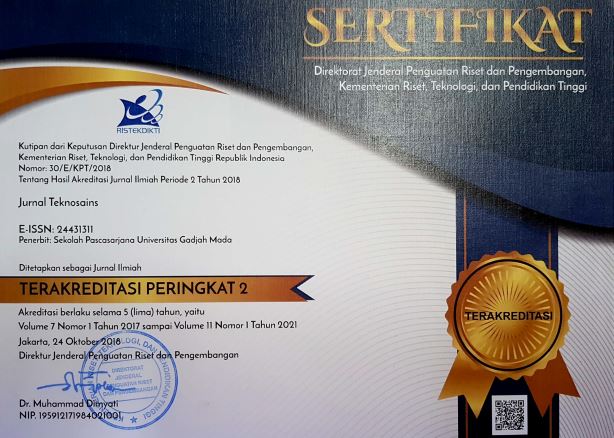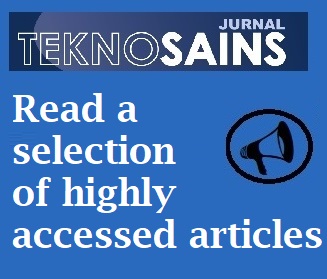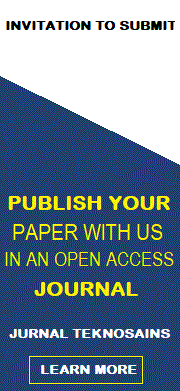SIMULASI ALIRAN PASIEN RAWAT INAP UNTUK MENGURANGI BOTTLENECK
Thomas Sonny Soegiharto(1*), Anna Maria Sri Asih(2)
(1) Jurusan Teknik Mesin dan Industri Fakultas Teknik, Universitas gadjah Mada
(2) Department of Mechanical and Industrial Engineering, Gadjah Mada University, Yogyakarta, Indonesia
(*) Corresponding Author
Abstract
Bottleneck is possible to occur in a system like hospital, especially in admission and discharge of inpatient processes. It can have impact on increasing waiting time and delayed time. Some alternatives were proposed to reduce them, i.e. shift scheduling and human resource allocation. This research modelled real system accompanied by two scenarios: the first scenario was conducted by balancing human resource utility without altering number of employees, whereas the second scenario considered possibility of changing number of employees. The results showed that both scenarios produced reduction of waiting time and delayed time. The first scenario is more feasible compared to the second as no hiring or firing employees occurred, resulting in waiting time reduction of 110.6 minutes (15%) and decrease in delayed time by 184 minutes (15.9%). The reduction of waiting time and delayed time is higher in scenario 2, which are 423.6 minutes (57%) and 281 minutes (24%), respectively. However, there must be 4 additional employees hired in pharmacy applied in scenario 2.
Keywords
Full Text:
PDFReferences
Andayani, P.E., 2014, RS Peringkat Terbaik di Dunia, http://manajemenrumahsakit.net/wp-content/uploads/2013/07/RS-Peringkat-Terbaik-di-Dunia.pdf, diakses online tanggal 3 September 2014.
Harrel, C., Ghosh, B.K., Bowden Jr., R.O., 2012, Simulation Using Promodel 3rd Ed., McGraw-Hill, New York.
Diefenbach, M., Kozan, E., 2008, Hospital Emergency Department Simulation for Resource Analysis, Industrial Engineering & Management Systems, Quennsland University of Technology, Brisbane.
Ibrahim, N., 2011, Appointment Scheduling Instalasi Radiologi dengan Metode Simulasi, Tugas Akhir Jurusan Teknik Mesin dan Industri, Universitas Gadjah Mada.
Kementerian Kesehatan RI, 2013 , List Rumah Sakit Terakreditasi Propinsi D.I.Yogyakarta, http://sirs.buk.depkes.go.id/rsonline/report/akreditasi_list.php?id=34prop, diakses online tanggal 3 September 2014.
Law, A.M., Kelton, W.D., 1991, Simulation Modeling and Analysis 2nd Ed., McGraw-Hill, New York.
Murthy, D.N.P., Page, N.W., Rodin, E.Y., 1990, Mathematical Modelling: a Tool for Problem Solving in Engineering, Physical, Biological, and Social Sciences, Pergamon Press, UK.
Menteri Kesehatan Republik Indonesia, 2010, Peraturan Menteri Kesehatan Republik Indonesia Nomor 340 / MenKes / PER / III / 2010, Bab 4 Pasal 10-13.
Schmidt, J.W., Taylor, R. E., 1970, Simulation and Analysis of Industrial Systems, Richard D. Irwin.
Silva, D.D., 2013, Improving Patient Flow Across Organisations and Pathways, The Health Foundation, Evidence Centre, London.
Article Metrics
Refbacks
- There are currently no refbacks.
Copyright (c) 2017 Thomas Sonny Soegiharto, Anna Maria Sri Asih

This work is licensed under a Creative Commons Attribution-ShareAlike 4.0 International License.
Copyright © 2024 Jurnal Teknosains Submit an Article Tracking Your Submission
Editorial Policies Publishing System Copyright Notice Site Map Journal History Visitor Statistics Abstracting & Indexing









